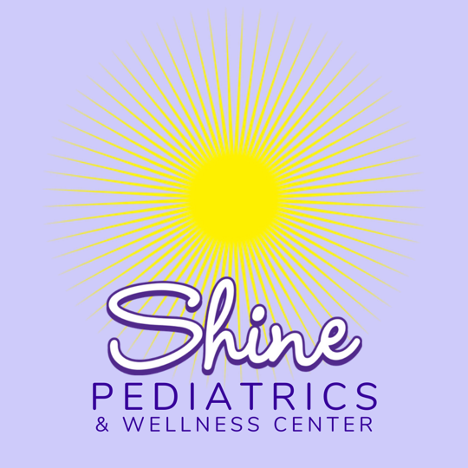
Your nutrition sets the terrain of your body. Why is it that two people can plant the same seeds in the ground but one will have a harvest of growth while the other will have a harvest of nothing. The growth of organisms is related to the terrain.
As it is on a very macro level, human beings will exist if there is sustenance and a protective environment. If not, humanity will perish. It is the same thing at a microscopic level.
Factors to Control
If we can control pH, having a healthy electromagnetic potential, avoid toxins and allow our bodies access to vitamins, minerals, amino acids, much of our life on earth will be free of disease. Our diets cannot impact some of the extremes of injury due to physical trauma or accidents but for the day to day problems that we see in primary care medicine, controlling for pH, electromagnetic potential, toxins, and nutrition will bring about good health.
You can read more about the pleomorphic principles and the importance of the terrain vs. the conventional medical model of germ theory and monomorphism below.
Diet Tips
In summary, eat more alkaline foods. Avoid as much as you can all of the telecommunication around you when you don’t need it. Avoid the toxins by being aware of what you put on your skin, what you smell, what you taste. And of course, shop on the outside of the grocery store and eat foods that will quickly perish. Foods that perish mean they are real and not full of preservatives.
For more information specific to your child, schedule an appointment with one of our providers today. We offer appointments for new patients and even telehealth for our existing patients. Message us through Klara or call our office at 469-333-1543.
Further Reading in-depth below:
Germ theory (Monomorphism) and Pleomorphism
What is the difference?
Microorganisms only have one possible form and do not have the ability to evolve into different types of organisms. This theory came from Louis Pasteur and hence the term pasteruizaton to kill bacteria in foods and drinks
The germ theory began from Louis Pasteur and resulted in The germ theory followed, which states that specific diseases are caused by infection with specific microorganisms and are cured when the microorganisms have been destroyed. This has brought about the conventional model of medicine that antibiotics, antivirals, antifungals are required.
The pleomorphic theory developed by scientists like Antoine Béchamp and Günther Enderlein and states that microorganisms have various life cycles and stages of development that can range between viruses, bacteria, yeast and fungi, depending on the type of microorganism and the environment it is presented with.
Theory of Microzymas
Béchamp was a Master of Pharmacy, Doctor of Science, Doctor of Medicine, Professor of Medical Chemistry and Pharmacy, Fellow and Professor of Physics and Toxicology, Professor of Biological Chemistry and Dean of the Faculty of Medicine.
He made a conclusion regarding something called “molecular granulations” that have been observed in the cells of plants and animals,
He called them “microzymas” (small ferments), due to their ability to ferment sugar.
He continued his research over another 13 years, developing the Theory of Microzymas. This theory states that the microzyma is an independently living element, found in all living organisms and survives after the death of the organism. It functions to both build and recycle the organism.
It is the builder and destroyer of cells; it precedes life at the cellular level and is the foundation of all biological organization. In healthy conditions, the microzymas have a beneficial relationship with the organism and fermentation occurs normally.
Microzymas are very sensitive to biological signals, responding to changes in the terrain, especially pH. When the terrain becomes compromised, the microzymas become what Béchamp called “morbidly evolved”, changing into microscopic forms (bacteria) that contribute to the development of illness. Béchamp believed this characteristic to be linked to the function of the microzymas to recycle the body upon death.
Internal vs. External
Pasteur’s germ theory sees disease as being caused by external factors, whilst Béchamp’s pleomorphic theory considers the internal environment as the most important contributing factor.
Béchamp did not deny that the air carried germs, but maintained that they were not primarily responsible, and certainly not necessary, for disease. They are only present because of the compromised terrain. A good analogy was made by Rudolph Virchow: “… mosquitoes seek the stagnant water, but do not cause the pool to become stagnant.
A researcher worth mentioning, who preceded Antoine Béchamp, was French physiologist Claude Bernard (1813-1878).
He was one of the first scientists of his time to see that disease is not simply determined by the germs involved or the symptoms present. He believed disease to be a general, underlying condition, affected and determined by the body’s internal environment, which he called the “Terrain”.
The state of the terrain is determined by four factors, namely:
1) The body’s acid/alkaline balance
2) The body’s electric/magnetic charge
3) The body’s level of poisoning
4) The body’s nutritional status
During the 1920’s R.R. Rife was researching a method to treat disease by destroying microorganisms through radio frequency radiation. He successfully cured many serious conditions, including polio, TB and cancer.
More discoveries
German zoologist and bacteriologist Prof. Dr. Günther Enderlein (1872-1968) is still considered by many as the father of pleomorphism. He based his work on that of Antoine Béchamp and conducted research for over 60 years, which led him to several remarkable discoveries.
He showed that the protit, not the cell, is the smallest biological unit of life. Protits (Béchamp’s microzymas) are small, living protein particles found in all the cells, blood and other fluids of all living organisms. They can not be destroyed and survives after the death of the organism, performing the function of decomposition.
In healthy conditions the protits remain small and beneficial, working with the body in a symbiotic relationship. However, when presented with a disturbed environment, the protits are able to develop into more complex, pathogenic forms, including bacteria and fungi. The specific symptoms and forms of disease depend on the level of development of the pathogenic forms, which is governed by the state of the terrain.
Enderlein referred to all the possible developmental forms of the protits as the Endobiont. He discovered that two microbes exist, and has always existed, in all vertebrate mammals. These are Mucor racemosus Fresen, which he called the primary parasite, and Aspergillus niger van Tieghem.
The Anartatic Law of Interdependence states that the progressive development of microorganisms from the protit stages into their higher and highest stages requires a progressively descending pH.
It is important to note that Enderlein described the evolution of Mucor and Aspergillus, both of which find their culminant (highest stage of development) as a fungal organism.
Other organisms that may also be pleomorphic do not necessarily have their culminants in the fungal phase, but rather in the bacterial phase.
Recent Discoveries
Quebec scientist Gaston Naessens, who is currently involved in research, has also contributed greatly to pleomorphism. He designed a special microscope, called the “Somatoscope”, which enables him to observe changes in living tissue at very high magnification and resolution.
He discovered small living particles, which he called “somatids”. He has identified two somatid cycles: the microcycle and the macrocycle.
Only the microcycle occurs in health and consists of only three stages, where all three forms are symbiotic. The macrocycle occurs in disease and consists of sixteen stages, including bacteria-like and fungus-like forms.
These phases represent the highest phase of Mucor’s development in the living host and their presence is indicative of severe conditions.
For more information specific to your child, schedule an appointment with one of our providers today. We offer appointments for new patients and even telehealth for our existing patients. Message us through Klara or call our office at 469-333-1543.

